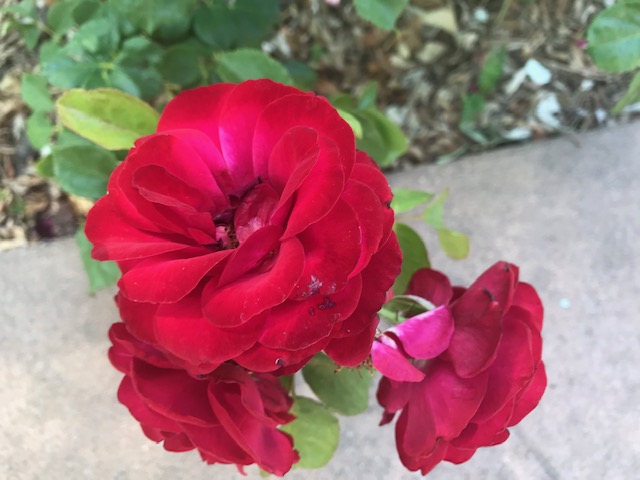
Karen Bustamonte and William Bergquist
Our third studio session focused insights and diverse perspectives to be gained from watching and entering into dialogue regarding a thought-provoking movie: My Octopus Teacher.. Facilitated by Dr. Karin Bustamante, we are offered this third studio on March 13. My Octopus Teacher is a movie that addresses important psychological issues regarding bonding, attachment, transference, consciousness and the interplay between nature and human existence. This movie tends to leave a strong impression on those who watch it. It might yield a glimpse for its viewers of emptiness or of intimacy. Here are several themes and questions that were posed during this 1 ½ hour session:
- A glimpse of emptiness…. as Dr. Bustamante noted in previewing this studio session: “I have seen this push to change everything in others and myself! While it took me much longer that six weeks to shift my life trajectory, from corporate work to teaching yoga, i’d be a hypocrite in not recognizing how life changing experiencing your true nature can be…”
- A glimpse of intimacy. The protagonist in this move finds connection with an inhabitant of the underwater depths. How should we describe their connection? It it an intimate relationship. How might this connection be described using attachment theory?
- A glimpse of meaning making. My Octopus Teacher demonstrates our collective drive to make meaning and perhaps ‘find a teacher’. What resonated themes or longings can we identify that are evoked in watching this film?
Following is a recording of the last 15 minutes of this studio where attention is directed to ways in which this movie and other movies (and provocative images and narratives) might be used in an art-enhanced psychotherapy, coaching or consulting session.
Following are some of the way in which the themes and questions evoked from the movie were addressed.
- This movie clearly demonstrated that humans can become attached not just to other people, but also to animals of many kinds — and even to objects. The dynamics of transference are powerful and pervasive.
- The protagonist was himself influenced, if not transformed, by his relationship with the octopus. Yet, it was only the relationship with his son that was changed (and not apparently the relationship with his wife). The protagonist might actually have been demonstrating a narcissistic preoccupation with his own evolving sense of self–ignoring important issues in his life while taking a swim.
- The protagonist was entering a new world for him when plunging into the water and holding his breath while diving down to meet with the octopus. To what extent are many transformational experiences likely to occur when we plunge into a new environment. Is a therapy, coaching or consulting session a way in which our clients plunge into a new environment.
- Was this a new kind of relationship for both the protagonist and octopus? Did the evolution of their relationship require that both the protagonist and octopus be conscious beings?
- The octopus was first seen protecting and hiding his/her self with shells. Are we likely to find that all conscious beings are inclined (or perhaps required) to protect themselves in some way. Wilhelm Reich writes about “character armor” as a way in which human beings protect (and constrain) themselves. Are the octopus and human beings both placing shells around themselves as a way to protect and hide themselves?
- There may be an important difference between the setting in which psychotherapy, coaching or consulting takes place. This setting is confined and prescribed–it is a container that (according to object relations theorists) provides a “container” which keeps the anxiety contained that inevitably arises during the session. Otherwise the anxiety will spill out and intensify. When our protagonist enters the ocean water there is no container. This is not a nice safe swimming pool in which the protagonist meets and interacts with the octopus. There are currents, waves, and other complex movements of the aquatic environment that defy any sense of containment. The protagonist and octopus are meeting in “troubled water”. Their interaction is more like that which occurs among human beings in the “real world.” then that which is to be found in the therapy, coaching or consulting office. How is the anxiety managed when the container is missing. Certainly, there would have been anxiety for our protagonist when entering the water. How was it contained? In a narcissistic structure constructed by the protagonist? Did both the protagonist and octopus place some shells all around them–even when interacting with one another.
- If the octopus possessed consciousness, then was she/he aware of their own mortality (especially when being attacked by the shark and losing a tentacle?) What is the cost of being conscious? Is it better to be without consciousness (the Zombie hypothesis).
- There is another character in this movie who is never identified. This is the person who is photographing the protagonist and octopus. What impact if any did the protagonist and/or octopus have on the person recording the interaction–and did the octopus develop a relationship with the photographer. All too often the narrator of a tale or observer of an event or interaction are ignored–when in fact they influence what has been observed and are themselves part of the interweaving system. They inevitably frame and interpret as well as record. No one lives outside the system–the water is everywhere.









